What is the Punk Aesthetic?
The Punk aesthetic is a collection of visual and physical elements like patterns, motifs, colours, textures, prints, shapes, and materials found in the clothes, accessories, and footwear that together construct the Punk fashion style, a visual way of dressing used by the Punk subculture to showcase their group belonging, values, and lifestyle.
The Origin of Punk Aesthetic
The Punk aesthetic elements started to emerge as communities centred around the punk-rock music scene of the 1970s as a form of political protest.
In the UK, punks were protesting against Margaret Thatcher’s politics at the time by rejecting the ‘Establishment’ and its capitalist philosophy.
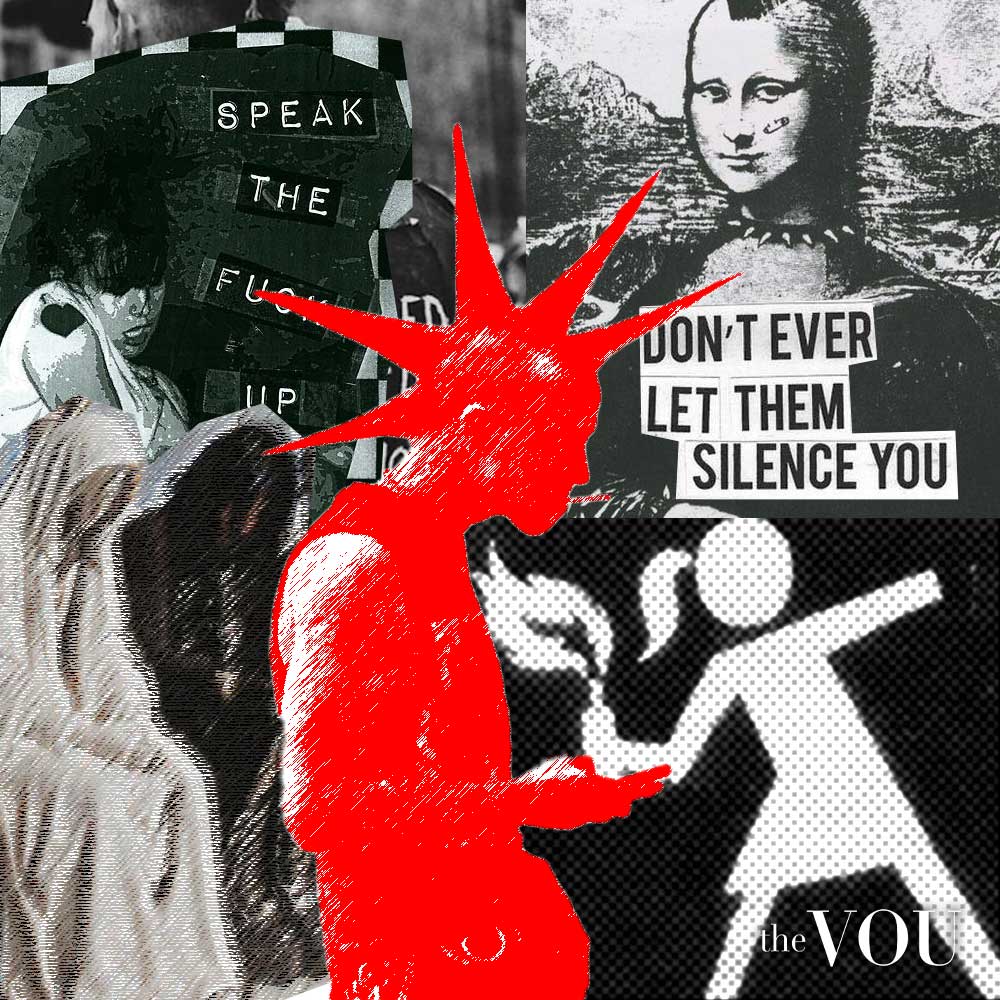
With far-left political views verging on anarchism, the Punk community created the image of a loud, abrasive, and acerbic rebel protesting against the status quo.
Over time, the subculture’s unique fashion style has become a symbol of rebellion, whether small-scale (teenager vs. parents) or large-scale (pro-anarchism, etc.).
Main Punk Aesthetic Elements
The unique look of the Punk subculture is constructed by aesthetic elements, patterns, motifs, and colors that depict an open push against the sanitized and formulaic mainstream culture.
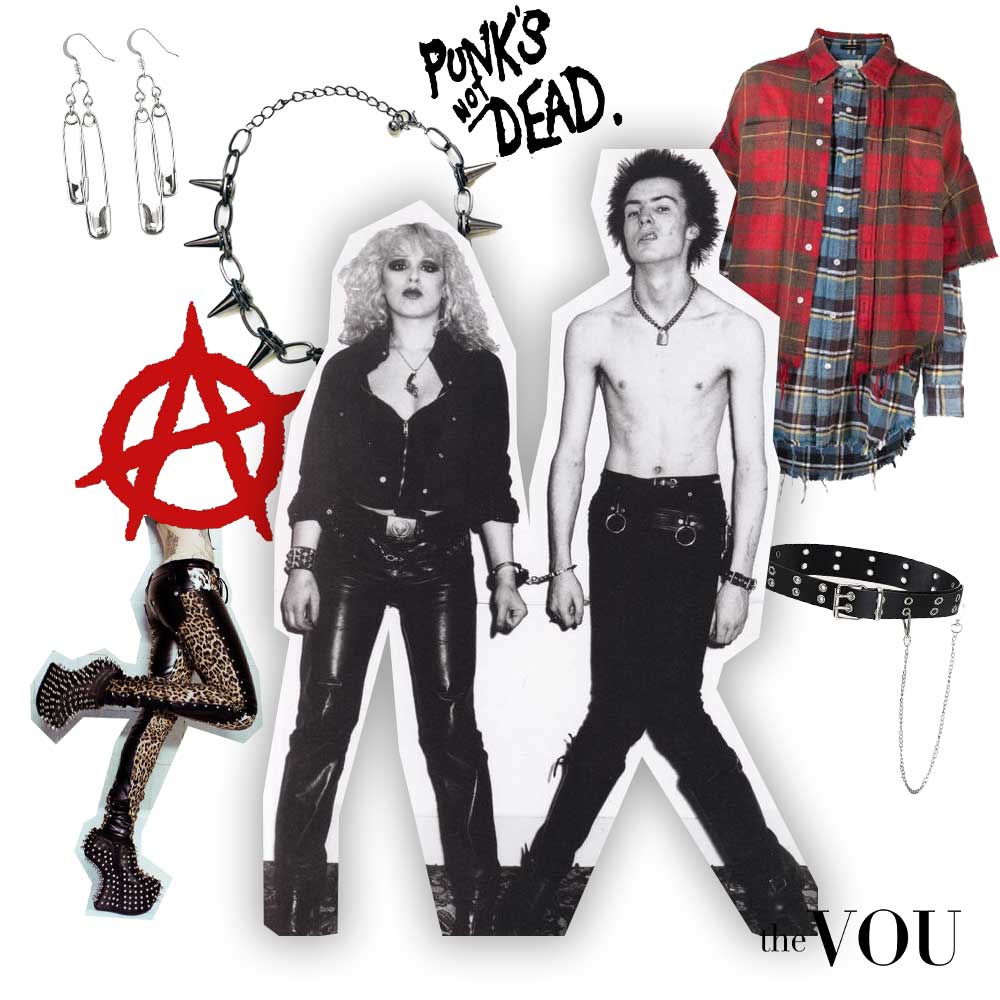
Drawing patterns and motifs from the Rock, Grunge, and Indie subcultures, Punk aesthetic elements comprise skull motifs, anarchy symbols, tartan patterns in rebellious colours, animal prints, and materials like leather and PVC.
Punk Patterns
Specific aesthetic patterns, motifs, materials, and silhouettes define the Punk look.
Altogether, these aesthetic elements are the foundational bricks of the Punk styles and substyles worldwide.
Tartan and Plaid
With aesthetic roots in the Scottish clans fighting for their freedom, Tartan became an emblem of the Punk movement, partly thanks to Sid Vicious of the Sex Pistols.
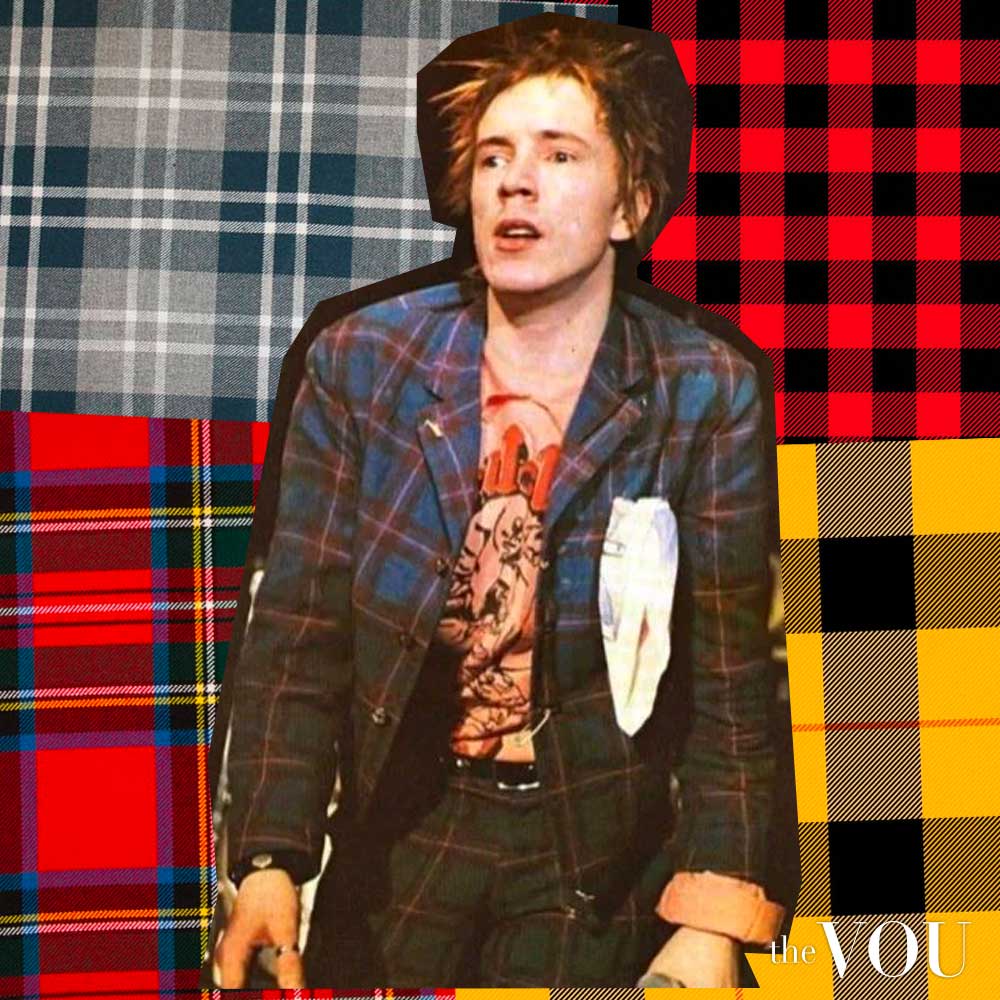
Animal Prints
Adopted by Punk bands like The Cramps, animal prints, in particular the patterns of leopard and zebra skins, were used to exude raw and primal energy and a sense of wild rebellion.
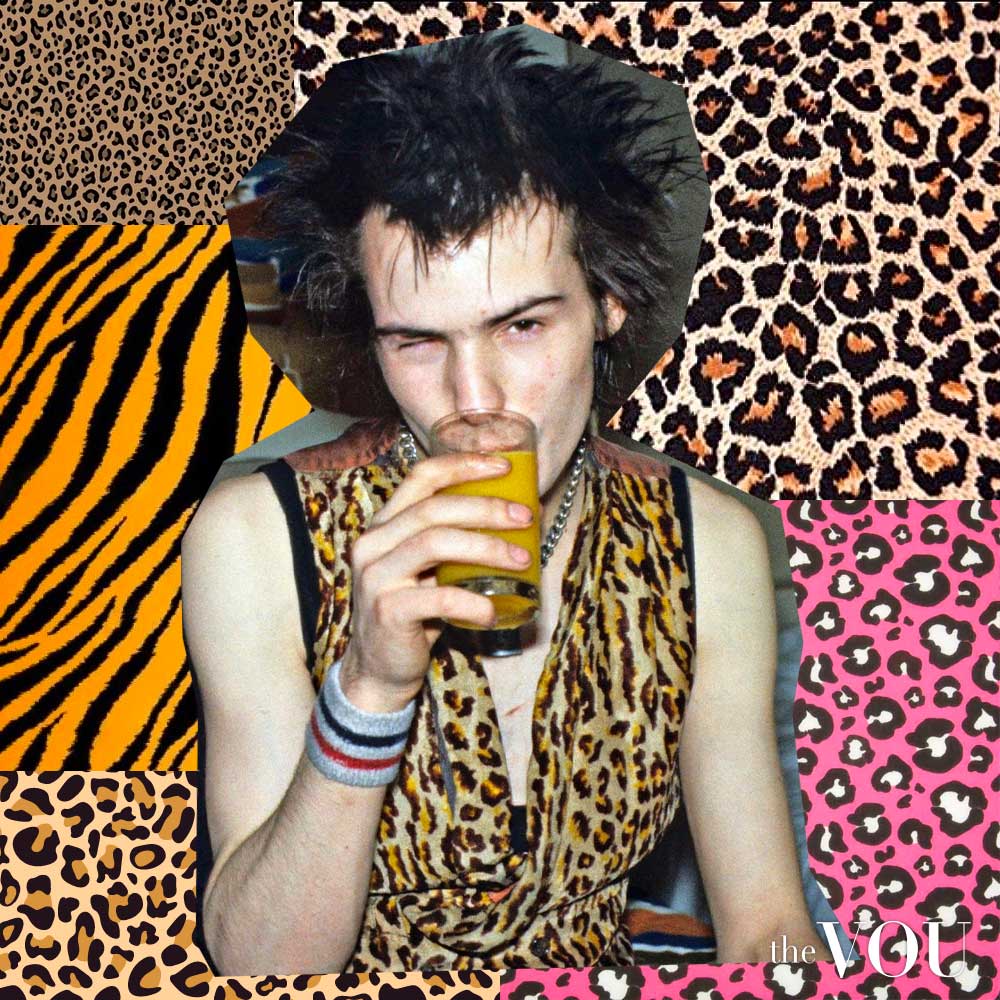
Skulls and Crossbones
Popularized by bands like the Misfits, this visual motif represents the Punk’s flirtation with danger, morbidity, and departure from societal norms.
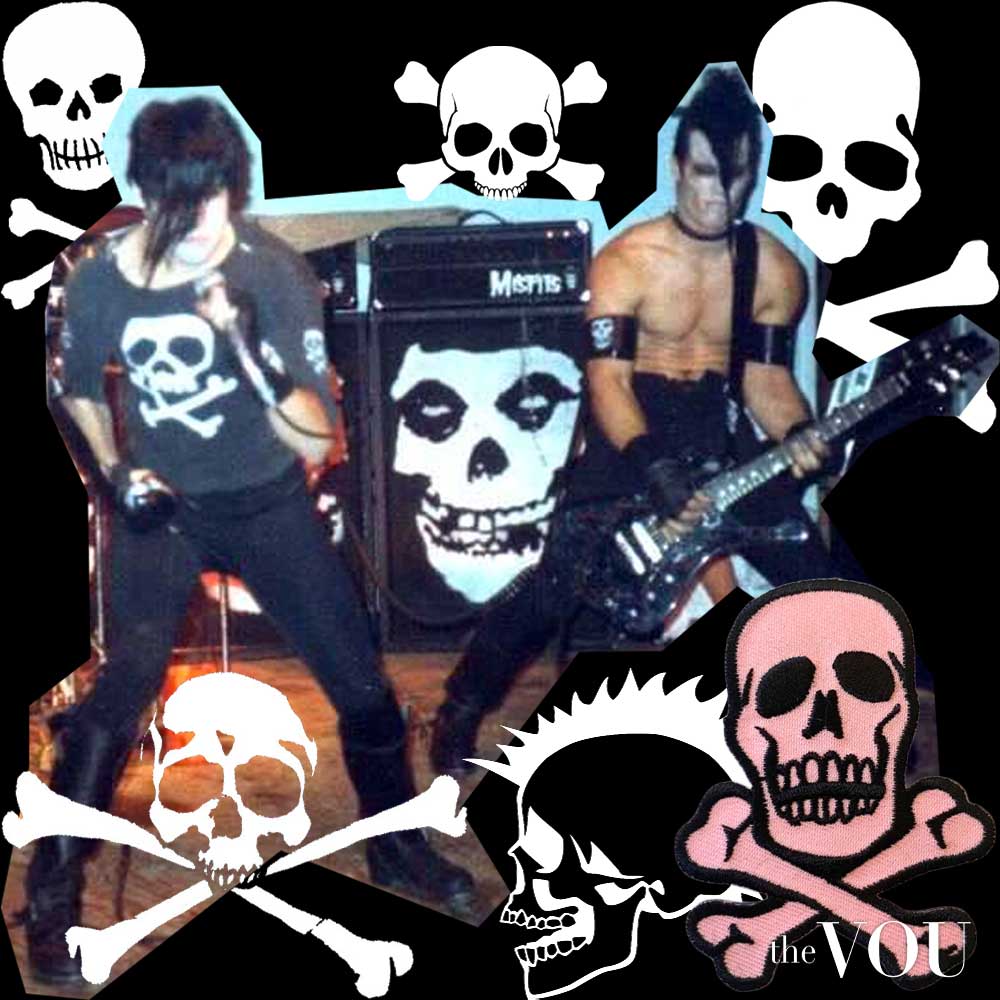
‘A’ for Anarchy
As one of the most recognized symbols of the Punk movement worn by bands and Punkers alike, the ‘A for anarchy’ sign was an essential anti-establishment message.
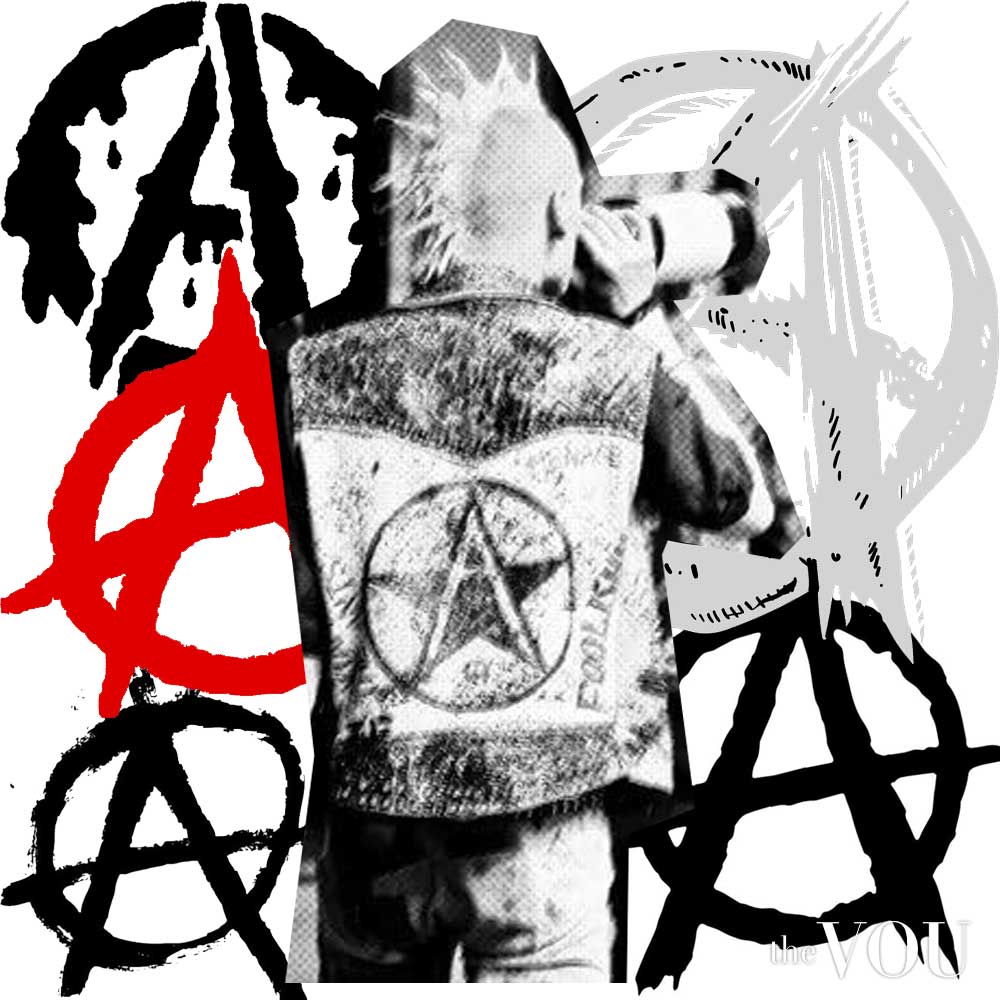
Main Punk Colors
Black, Grey, Red, and Blue
Black, Grey, Red, and Blue colours were adopted from the Rock subcultures for their meanings of fear, death, grief, mourning, occult, mystery, and rebellion.
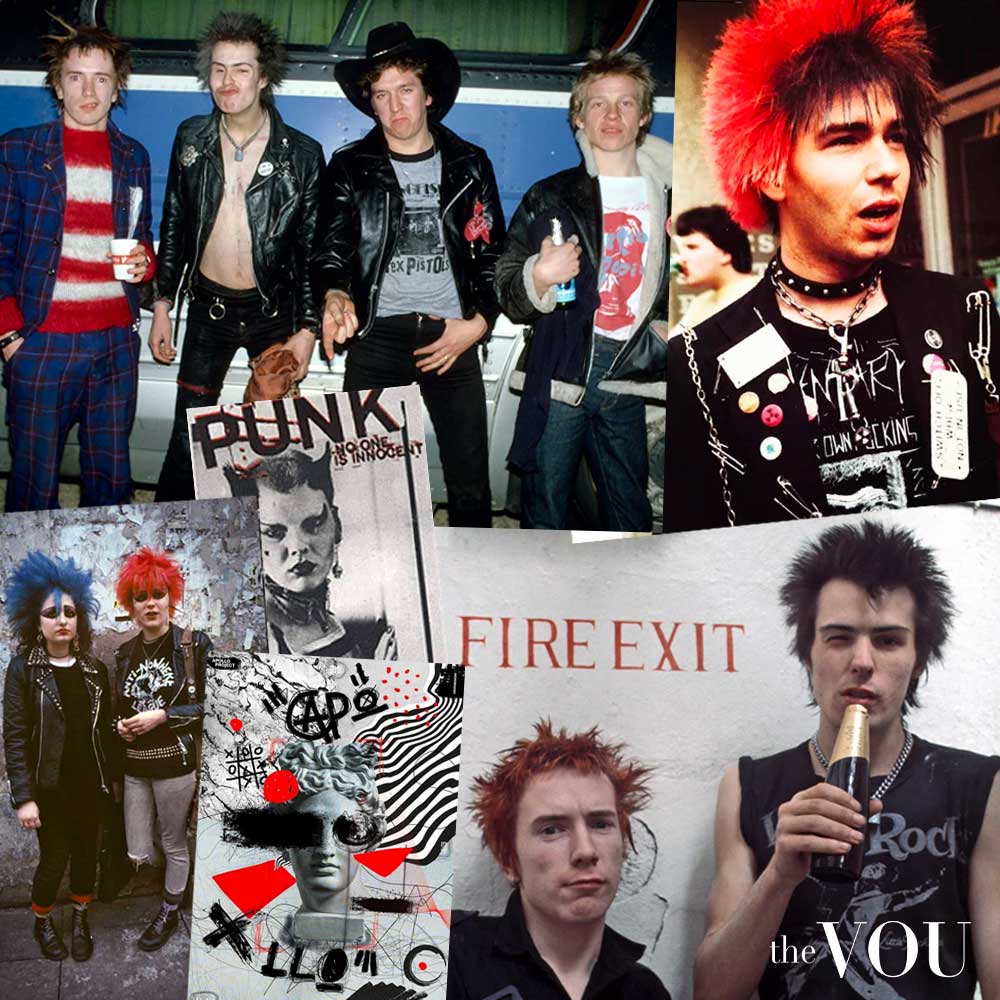
Sepia and Acid Green
Sepia colour to showcase vintage and nostalgia for a world that ‘should have been’ and acid green – a colour used to signal toxic or dangerous substances – to depict the world’s current ‘poisoned’ state.
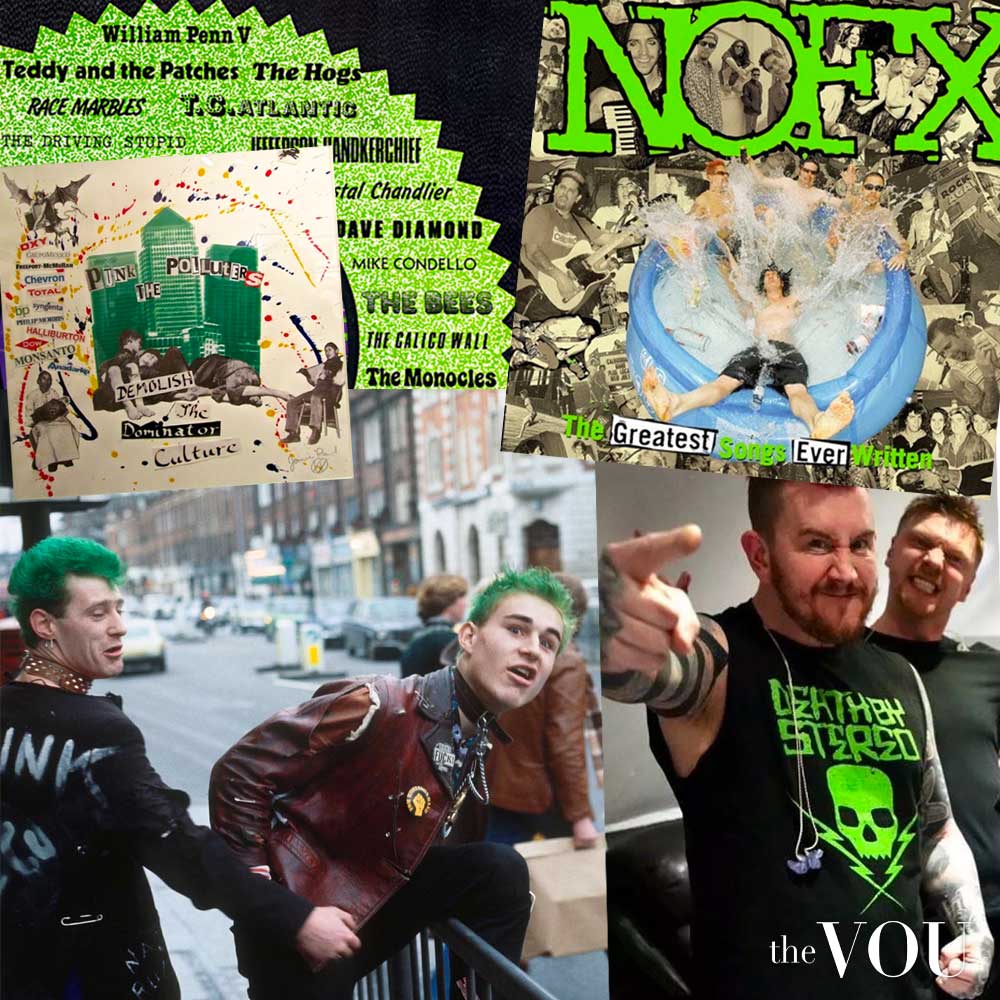
Magenta and Yellow
The punk subculture adopted magenta for the colour’s symbolism of introspection, compassion, kindness, and cooperation, and yellow as a meaning of universal harmony and emotional balance.
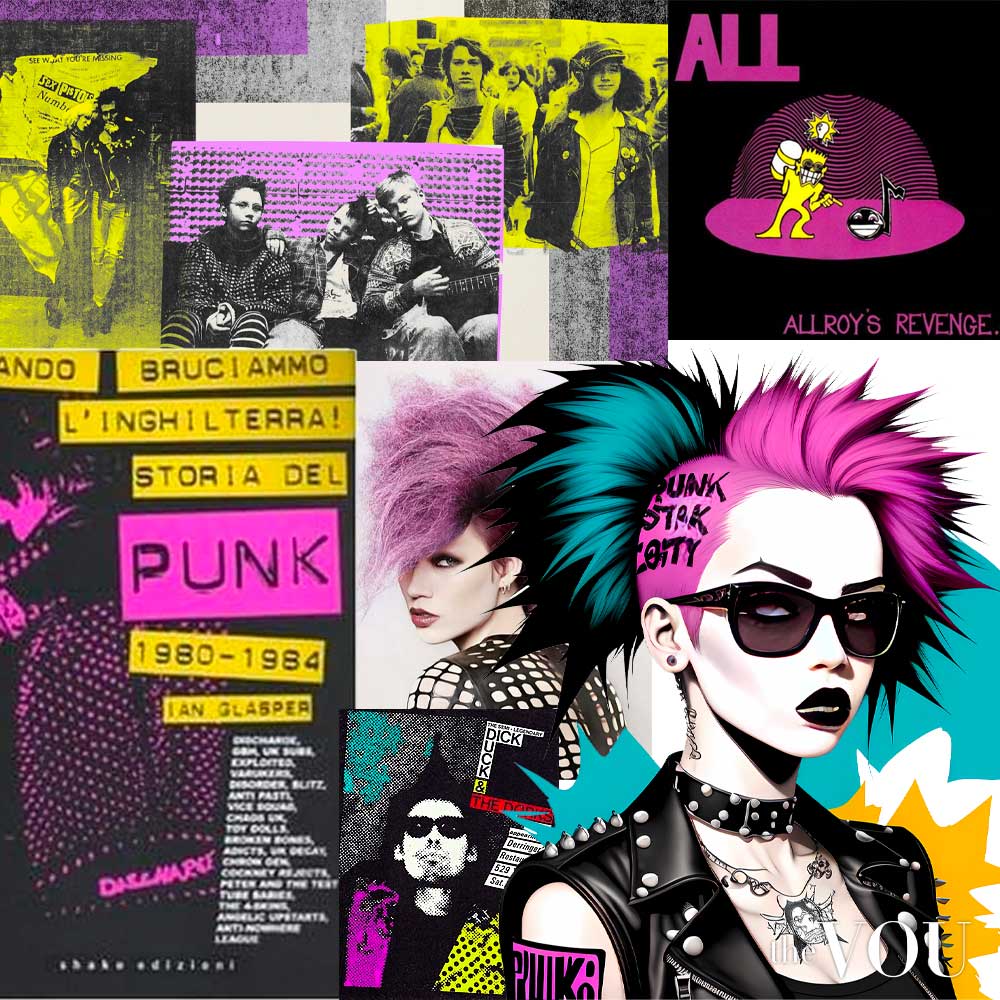
Dirty Orange, Green, and Blue
Punk’s use of orange symbolizes the community’s optimistic and confident views and light blue symbolizes imagination, inspiration, and freedom.
These colours symbolize the punk’s hopes for a better world where personal freedom primes.
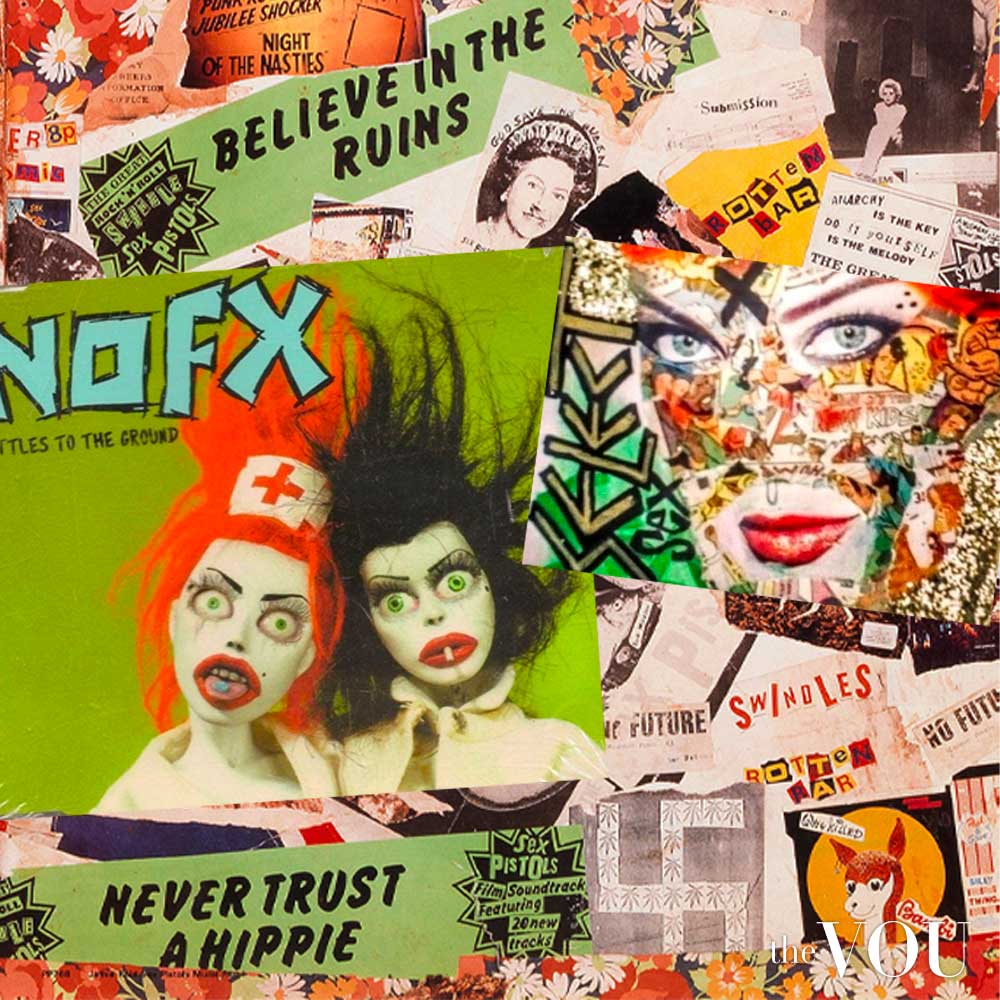
Punk’s Colored Lace Code
The use of coloured Punk laces to showcase further group belongingness and values emerged in the 1980s in Southern California.
Tied in a lace-ladder pattern, the lace’s colours depicted the wearer’s views on race, war, life, and political and social ideologies.
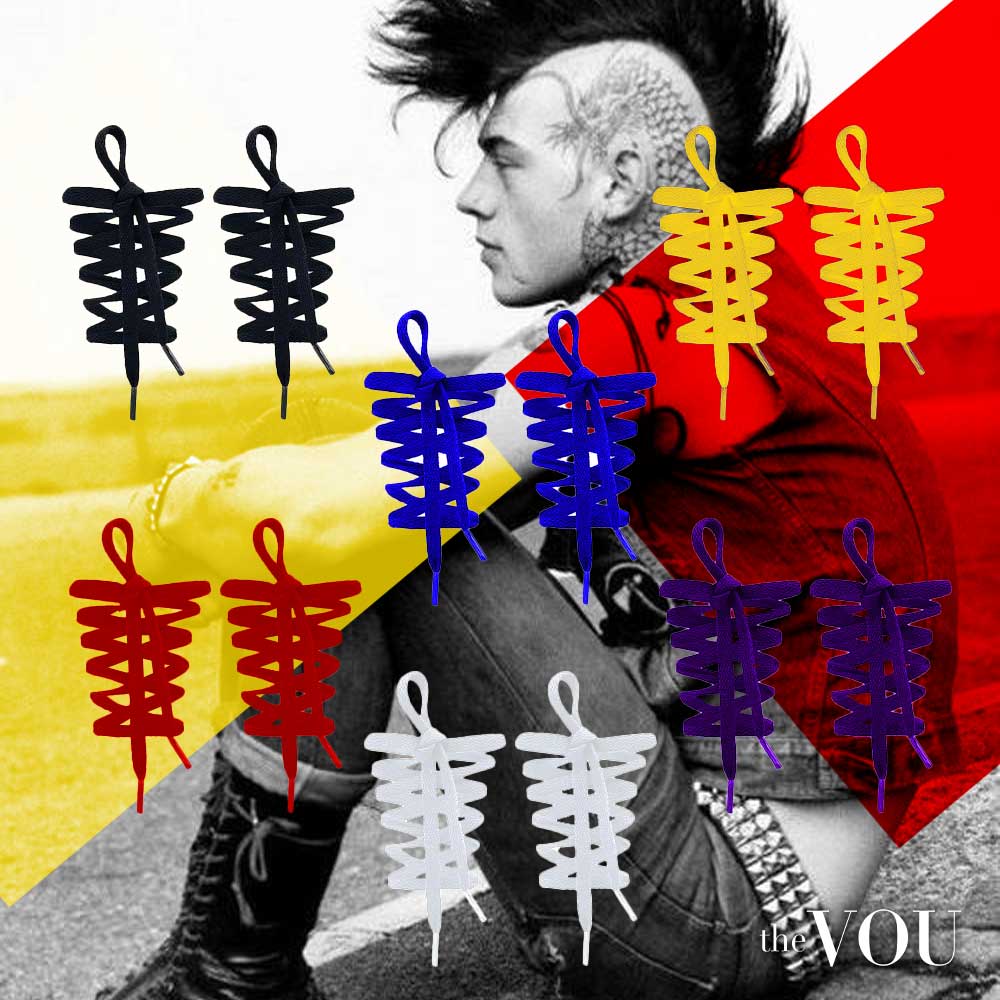
- Black laces denoted no particular affiliation or indicated alignment with Straight Edge, a movement within Punk promoting abstention from alcohol and other substances.
- Blue laces symbolized an anti-cop or anti-police sentiment. In some circles, it even suggested that the wearer might have killed a police officer.
- Yellow laces stood as a bold statement against racism and discrimination.
- Red shoelaces had a dual meaning: affiliation with Neo-Nazi or National Front groups or suggesting that the wearer killed someone.
- White boots laces represented White Pride or affiliations with groups like the KKK, distinctly different from Neo-Nazi leanings.
- Purple laces are a more recent addition indicating support for the LGBTQIA+ community.
Punk Materials and Textiles
Leather
Worn by icons like The Ramones, rock-style leather jackets became Punk’s garment of choice, signaling resilience and an aggressive stance against mainstream softness.
PVC, Latex, and Rubberized Textiles
Wendy O. Williams popularized shiny and ‘provocative’ materials like latex and PVC – lead at The Plasmatics band – to challenge the norms of decency and create an avant-garde look.
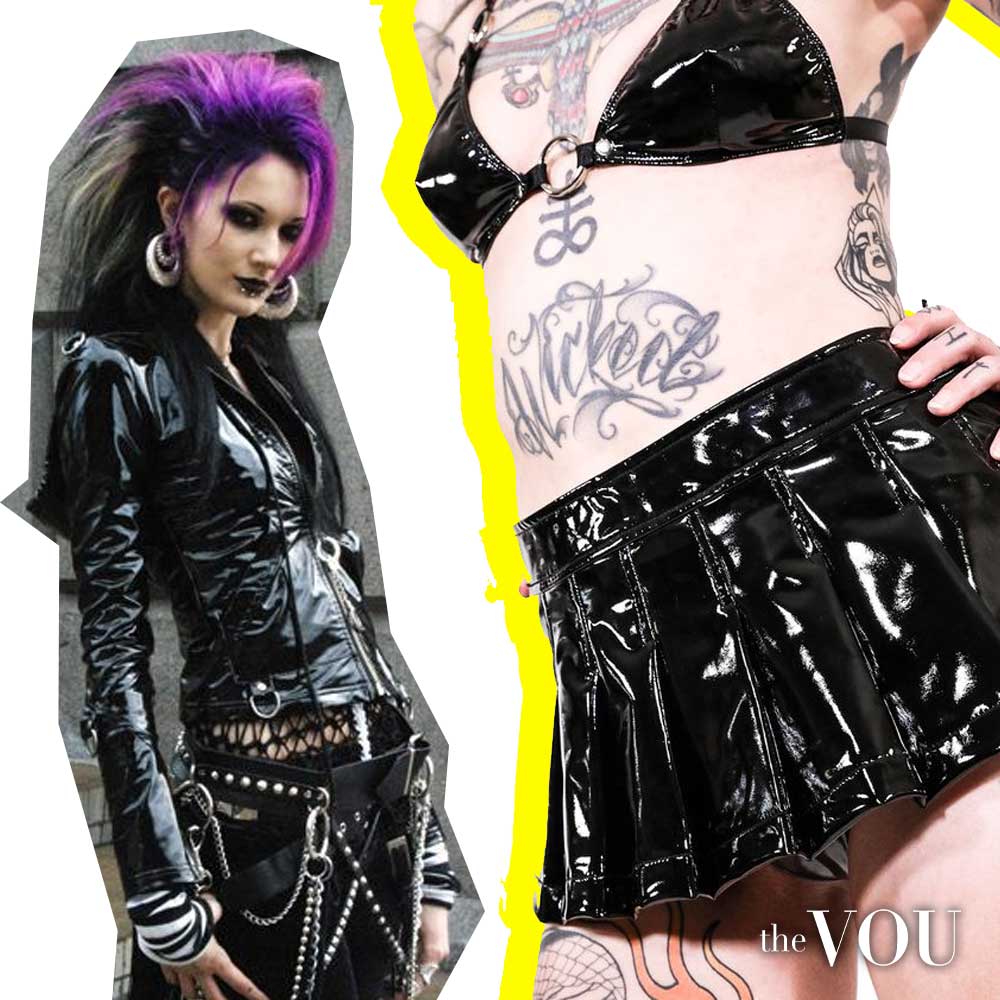
Main Punk Silhouettes and Shapes
Torn and Tight Shapes
The raw energy of Punk was flawlessly encapsulated in the deliberate use of torn clothing by celebs like Iggy Pop, hinting at a DIY ethos and a disdain for perfection.

Layering and Mismatching Clothes
By merging the chaos of Punk with a touch of new-wave sophistication, The Clash was known for mixing different garments in some of the most unexpected ways.
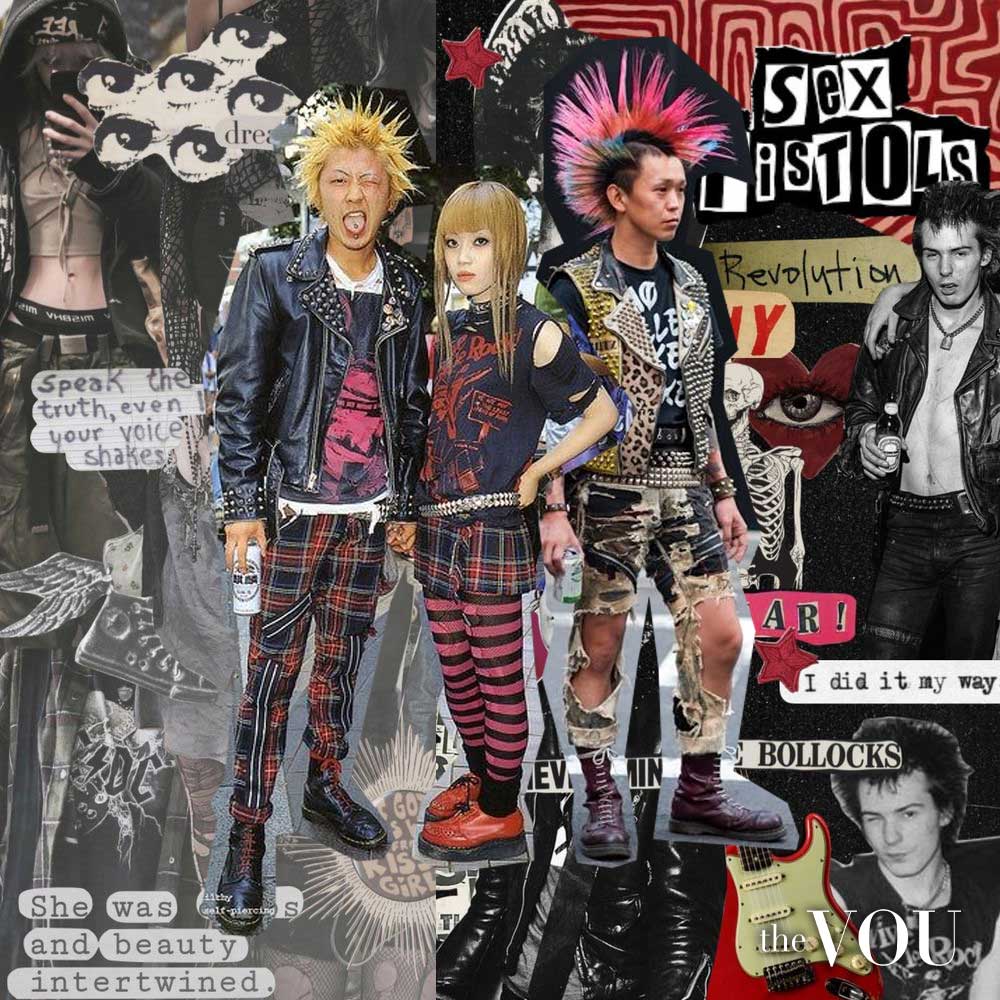
Chains and Spikes
Used as jewellery and clothing embellishments, chains and spikes became emblematic of Punk’s aggressive attitude.
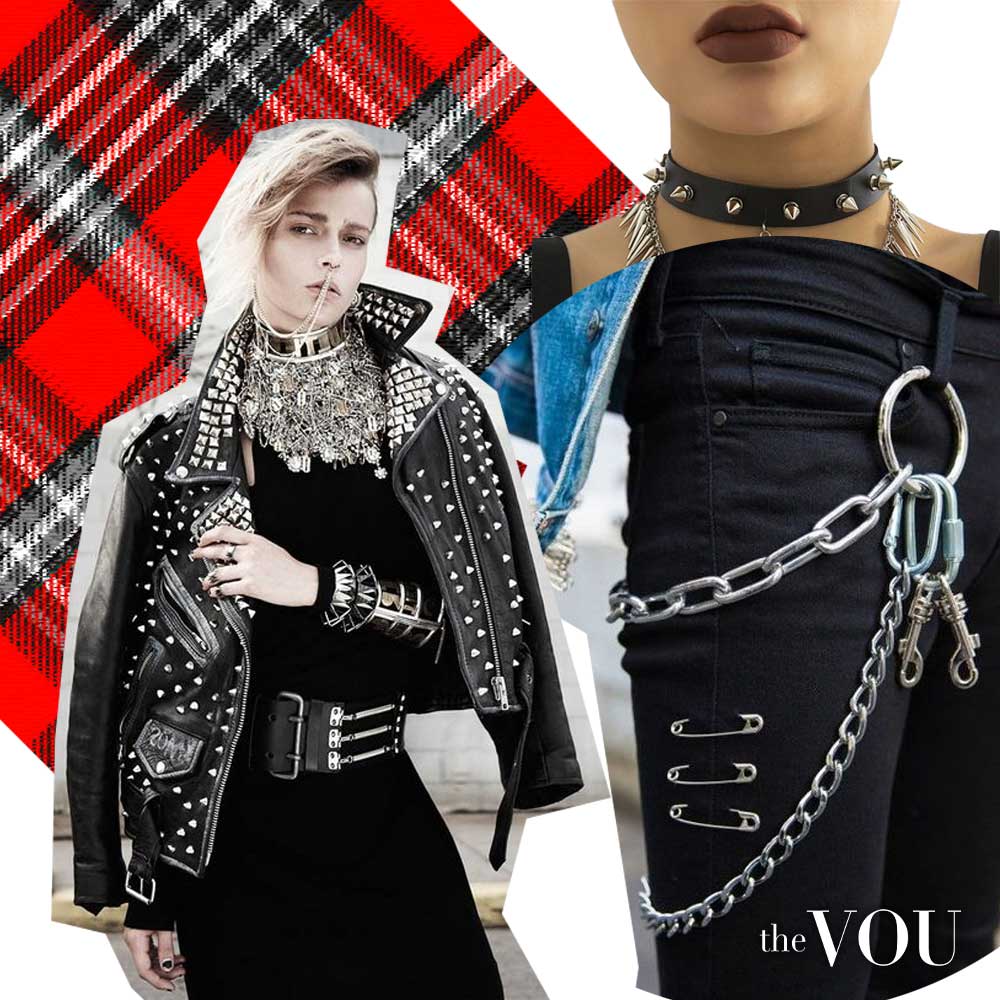
Safety Pins
Propelled into the fashion limelight by Vivienne Westwood’s boutique “SEX,” safety pins changed from ordinary objects into symbols of rebellion.
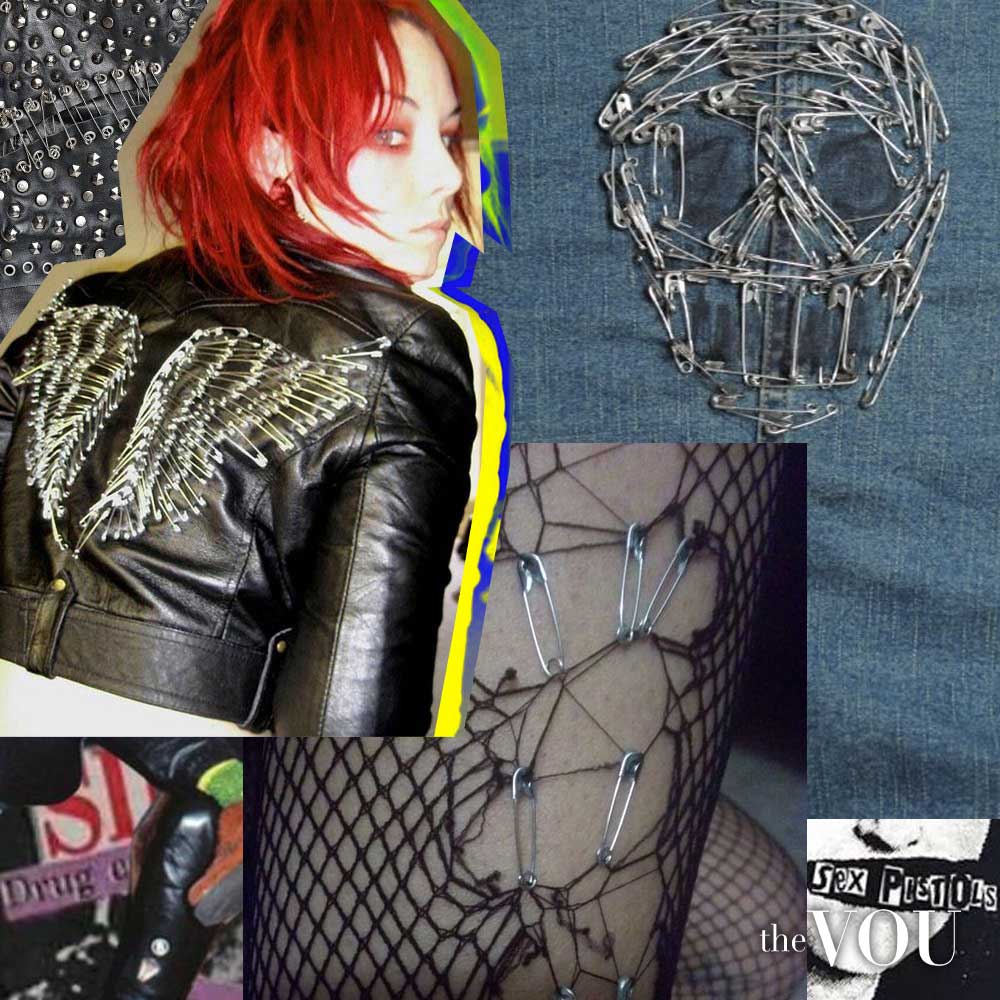
All Punk Substyles and Variations
- Crust Punk
- Horror Punk
- Hardcore Punk
- Queercore
- Straight Edge
- Pop Punk
- Riot Grrr
- Ska Punk
- Taqwacore
- Anarcho Punk
- Glam Punk
- Street Punk
- Skate Punk
- Ska Punk
- Straight edge Punk
- Cowpunk
- Punk jazz
- Cyberpunk
- Steampunk
- Dieselpunk
- Atompunk
- Desert Punk
- Clockpunk
- Biopunk
- Solarpunk
- Psychobilly
- Goth
- Emo
- Deathrock
A University of Oxford graduate in Design History, Katherine Saxon is researching arising TikTok cultures from a consumer psychology perspective while covering emerging aesthetics in fashion and beauty for TheVOU, Forbes, Business Insider, and more.
After years of managing hundreds of fashion brands from London's office of a global retailer, Mandy has ventured into freelancing. Connected with several fashion retailers and media platforms in the US, Australia, and the UK, Mandy uses her expertise to consult for emerging fashion brands create top-notch content as an editorial strategist for several online publications.
A passionate advocate for inclusivity and diversity, Aidan is the driving force behind The VOU as its Editorial Manager. With a unique blend of editorial acumen and project management prowess, Aidan's insightful articles have graced the pages of The Verge, WWD, Forbes, and WTVOX, reflecting his deep interest in the dynamic intersection of styling with grooming for men and beyond.


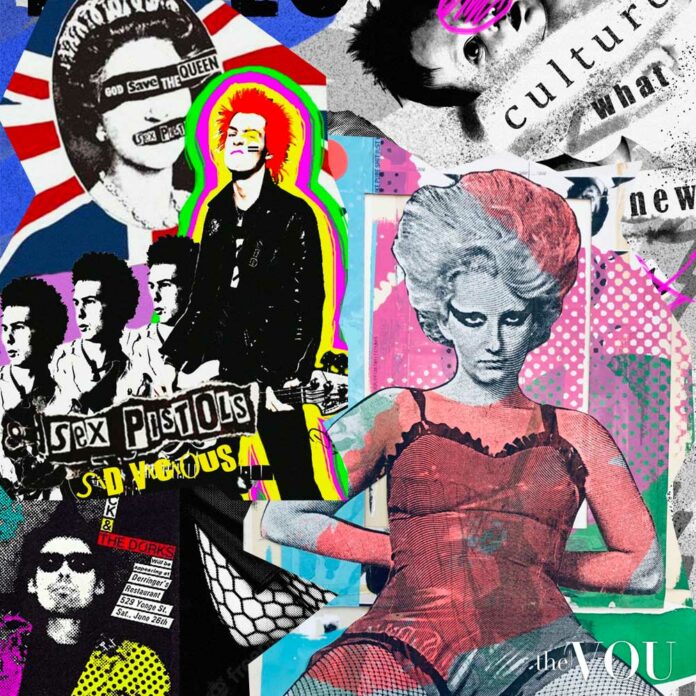
Nazis arent punk.